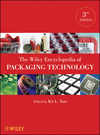
|
|
Joncryl® acrylic resin.
Image taken by Duane Hoagland, BASF Corporation
|
Q: What is the most widely misunderstood or unknown thing about raw materials/feedstocks/resins for the flexible packaging industry?
A: Many printers and converters assume they have to print with solvent-based inks to achieve the quality of print needed to satisfy brand owners and buyers. This may have been true in the past, but with the advancements of water-based resin and ink technologies for both surface print and lamination applications, it is possible of printing high quality images with water-based systems for more demanding applications.
BASF’s Joncryl® FLX line enables printing ink manufacturers to design inks that will print cleanly over extended periods and meet product resistance requirements in surface print or reverse print lamination applications.
Q: What is the most widely used type of film in the flexible packaging industry?
A: Packaging producers select a film or a combination of films to meet specific requirements of the package.
The most widely used type of film in the flexible packaging industry is polyethylene. Polyethylene is available in various grades for a wide selection of applications, such as shopping bags, shrink-wrap and outdoor bags, as well as a sealant layer in various snack food and other lamination applications.
Q: What are the newest raw materials offered by BASF for flexible packaging/film?
A: BASF continues to support the flexible packaging industry by developing new resin products for use in flexible packaging inks.
Joncryl® FLX 5200 polyurethane dispersion is BASF’s latest innovation in water-based polymer technology specifically for flexible packaging. Water-based lamination inks based on Joncryl® FLX 5200 exhibit high lamination bond strengths balanced with good transfer and printability. In addition, it is compatible with standard ink making raw materials so ink manufacturers now have a wide range of formulation options to produce the best ink for their specific flexible packaging application.
Improved printability along with adhesion and wetting characteristics on PET, OPP, PE and nylon substrates now makes it possible to formulate water-based lamination inks with bond strengths suitable for most food packaging applications.
Q: What do you believe is missing from this sector?
A: Many printers and converters would like the option of printing with water-based ink systems on flexible packaging applications. Until now, laminating inks that met the bond strength requirements of many medium performance lamination applications had to rely on using solvent-based technologies to achieve the combination of good printability along with acceptable bond strengths when printed on difficult to adhere to substrates such as treated polyester and nylon.
Now, film printing inks based on Joncryl® FLX 5200 polyurethane dispersion can be designed that exhibit high lamination bond strengths balanced with good color strength and good printability.
BASF Corporation
(800) 231-7868; www.basf.us/dpsolutions








